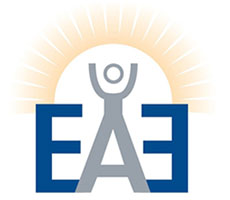College Costs

College Discussion Panel
October 31, 2011Scholarships, Internships, Fellowships, and Resources
October 3, 2011Download the free guide developed by U.S. Congresswoman Lucille Roybal-Allard, Congressional District 34-California. Although this was last updated in September, 2010, it provides great information and links. Also, it’s nicely organized month-by-month based on submission deadlines.
College Research Sheet
September 27, 2011It is highly advisable that students research and visit potential colleges. The completed College Research Sheet illustrated here provides a quick glimpse of the differences between Ivy League, HBCU, public, military, and highly-selective liberal arts colleges. There are huge differences in acceptance rates, graduation rates, number of students, costs of attendance, and diversity. Students should identify a group of colleges they are interested in applying to, thoroughly research the schools, schedule an on-campus visit, and carefully discuss their options with parents, counselors, coaches, and students who have attended the college or university.
Download a blank College Research Sheet
Helping Low Income Students Enter College
August 20, 2011We have long known of the huge gap between low and upper income students, commonly referred to as the “college-knowledge gap.” Not only must low income prepare themselves academically for college, they must navigate the college admissions maize with little support from both their homes and their schools. School counselors are overwhelmed with the sheer number of students whom they must coax through high school graduation that they frequently do not have sufficient time to provide adequate support to assist students researching colleges, applying for scholarships, or putting together college application packages (See the California Opportunity Report: Roadblocks to College).
Nonprofit foundations like ours, faith organizations, like Turner Chapel AME Church in Marietta, Georgia, and even booster clubs are stepping forward to provide needed assistance to students. Not only must students receive the necessary support to complete their college admission packages, students must be assisted with making the right college choice. The wrong choice could result in not only the student failing to receive his or her degree, but incurring thousands of dollars in debt.
Time to Take Charge!
July 29, 2011Parents and students need to stop blindly going through K-12 education without doing the necessary research to identify the most appropriate colleges and careers. Whether or not students attend good high schools with well-informed counselors, the information is only a mouse click away:
- The U.S. Department of Education’s College Affordability and Transparency Center serves as a valuable resource to compare tuition costs and the net prices of college
- The U.S. Department of Education College Navigator provides detailed information on all U.S. colleges and universities (including admissions, costs, graduation rates, and student demographics)
- The Bureau of Labor Statistics Occupational Handbook provides information on hundreds of types of jobs and the job markets in each State
- The Federal Student Aid website provides links to a broad range of websites to assist students in preparing for their education
Get connected and get informed!
Kentucky Attorney General Sues Daymar College
July 28, 2011In a previous post, I wrote about the financial risks of choosing the wrong college. I noted recent research that shed light on the low graduation rates and huge loan debt that students risk when attending for-profit colleges. Attorney General Jack Conway of Kentucky has initiated a lawsuit against for-profit college, Daymar College, alleging that the school overcharged students for textbooks and mislead students about financial aid and credit hours. There are seven for-profit colleges under investigation for aggressive recruiting, high tuition, low rates of job placement, and misleading students about financial aid.
The suit further alleges that students were misled regarding their ability to transfer credits to other colleges and Daymar enrolled students who failed to meet its own admissions standards. Enrolling students is big business for for-profit colleges. During the 2009/10 school year, Daymar received over $11 million in federal Pell Grants, while having the second highest student default rate among Kentucky-based schools.

